Flow Measurement with Electromagnetic Flowmeters
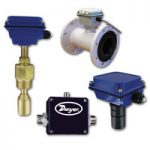
Electromagnetic flowmeters, often called magmeters, provide continuous flow indication of liquids via state-of-the-art electromagnetic technology based on Faraday’s Law.
According to Faraday’s Law of Induction, any change in the magnetic field over time induces an electric field perpendicular to the changing magnetic field.
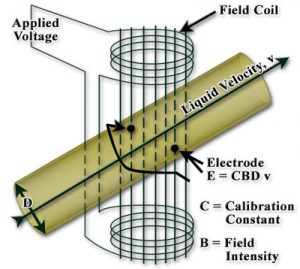
When a conductive fluid moves through the magnetic field within a magmeter, a voltage is generated between two electrodes at right angles to the fluid velocity and field orientation. The developed voltage is linearly proportional to the volumetric flow rate.
Based on this technology, magnetic flowmeters only work with fluids that are conductive.
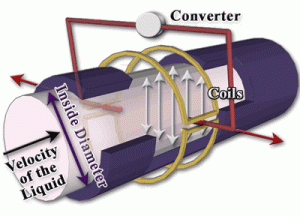
There are two basic types of magmeters. Flow-through or wafer style magmeters are tubes inserted into the piping system, mounted between flange connections, and offer the advantage of having no intrusions into the flow. These are constructed with a non-conductive liner inside the pipe to provide insulation. A pair of magnetic coils on opposite sides of the pipe generates the magnetic field. Electrodes are located in the flow tube at right angles to the magnetic field, and on opposite sides of the tube from each other. The flowmeter reads an average velocity across the flowtube diameter.
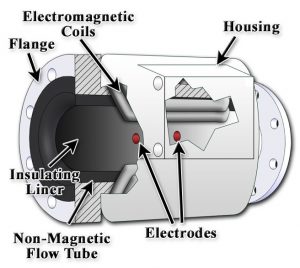
Insertion style is the other type of magmeter. With this style, the flowmeter probe is inserted into the pipe through a tap, which offers the advantage of being easily installed and removed. Both the magnetic coils and the electrodes are contained in the probe. The electromagnetic field is generated around the probe tip where the electrodes are located. Insertion style meters only read the velocity at the probe tip.
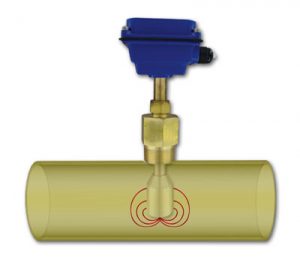
Electromagnetic flow technology has many advantages over other flow sensing technologies, making them great for applications with particulate and changing fluid properties (such as density and viscosity). The products have no moving parts to wear or jam, offer low pressure drop, and generally require less maintenance. They also have a wide sensing range and offer highly accurate readings.
From Dwyer Instruments Blog.
e8n37v
imr45d
lwyjse